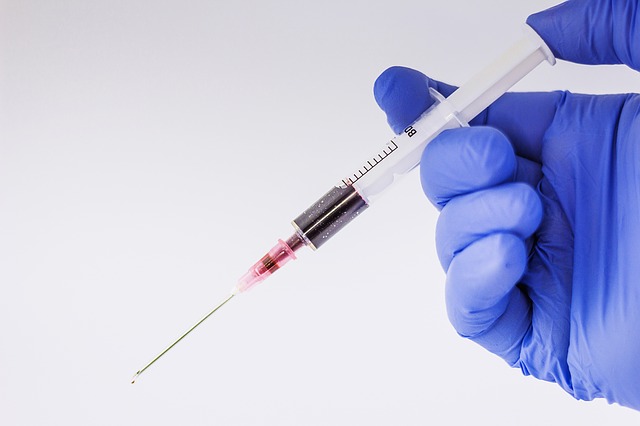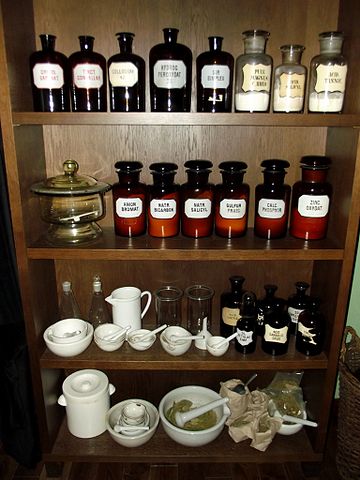The transfer into the bloodstream is an important event for the effect of a drug, while it is not relevant in the case of drugs administered topically, because the effect is localized on the mucous membranes or on the skin. In the latter group are also included drugs, that have an action within the gastrointestinal tract, such as antacids or laxatives, which is considered the therapeutic location, are defined as topical drugs.
For these drugs, absorption into the blood stream is not necessary, which in addition to the therapeutic effect, can lead to the appearance of undesirable or non-therapeutic effects.
The route of administration is one of the main factors influencing the absorption of a drug in addition to several elements including: water solubility and liposolubility, as well as molecular dimensions.
Absorption of a drug is also influenced by the pharmaceutical form, in fact if a drug is given in solid form the disintegration rate of the tablet and the subsequent dissolution can be a limiting factor.
The drug concentration influences the rate of absorption, an administration at high concentrations by the parenteral route is absorbed much more quickly than a drug at low concentrations, because it is absorbed mainly by a passive diffusion mechanism determined by the concentration gradient.
The blood flow in the area of administration limits the rate of absorption, for this reason, after an injection, a massage and heat are applied to increase the circulation of the treated area.
The absorption is conditioned by the permeability of the absorbent surface. Different epitheliums will have a different permeability. The intestinal epithelium is formed by a monolayer of cells, this feature allows a more rapid passage, which instead is cut down on the skin, because it consists of an outer corneified layer that makes the penetration into the underlying layers more difficult.
In this regard it should be noted that the presence of an ulcer or abrasions greatly facilitates the absorption of the drug, so as to affect it in a relevant way and this is an element to be analyzed in the pathophysiological conditions, which lead to an alteration of the functionality of the gastrointestinal tract.
One of the factors, which greatly reduce the absorption, is stress as it causes an increase in gastric mobility and an increase in blood flow to the skeletal muscle, also reducing the distribution, metabolism and excretion of drugs.
The most important pathways of this category are the intravenous route, the subcutaneous route and the intramuscular pathway.
In cases of subcutaneous and intramuscular administration, drug absorption occurs by simple diffusion through the capillary endothelium.
Intravenous Route
This type of administration must be carried out slowly, in order to avoid damage to organs such as the heart or the brain, due to the sudden presence of the drug in high concentrations, since they possess a high vascularization of their tissues. These excessive concentrations, in fact, could be toxic, to this end the slow injection of drug allows the interruption of the administration at the first sign of occurrence of adverse events.
Among the advantages that this route of administration offers, we can find:
- The blood concentration required for obtaining the therapeutic effect occurs immediately and accurately. This is very useful in the case, for example, of the administration of barbiturates for the induction of surgical anesthesia;
- The dosage can be controlled according to the patient's response;
- It is possible to inject substances that if administered in other ways would be irritating, in fact, once injected slowly into the systemic circulation the drug is promptly diluted.
On the other hand there are also disadvantages such as:
- The inability to remove the drug once it has been injected;
- The risk of the occurrence of adverse reactions is greater than the other routes.
Subcutaneous route
This route of administration is not indicated for the injection of irritants. The injection, which may consist of up to 2 mL of volume, occurs in the subcutaneous connective tissue of the forearm or on the surface of the abdomen.
The blood flow at this level is significantly lower than the muscle flow, so here the drug is absorbed more slowly, allowing the achievement of a prolonged effect over time.
The absorption rate can be appropriately modified with appropriate preparation techniques of the pharmaceutical form. Delayed absorption of a drug can be achieved by administration of a vasoconstrictor, such as adrenaline, associated with a local anesthetic, in order to prolong its effect.
A classic example is also the insulin retard preparations, which lead to a slow release of the hormone.
Through the subcutaneous implantation of solid forms or pellets, deposits can be obtained, the release of which can last weeks or even months, as this method is administered certain steroid hormones.
It continues in part 2..
Bibliography:
- Goodman and Gilman - "Il Manuale - Le Basi Farmacologiche della Terapia" - Zanichelli Editore (2015)
- Paola Dorigo - "Farmacologia Generale" - CEDAM (2006)
- Paolo Colombo, Andrea Gazzaniga, Elena Vidale – “Principi di tecnologie farmaceutiche” – Zanichelli Editore (2015)
Image source : Pixabay.com
Previous post:
Introduction to Pharmacology [ENG/ITA]
<><><><><><><><><><><><><><><><><>
ITA
Le vie di somministrazione dei farmaci – parte 1
Il trasferimento nel torrente circolatorio è un evento importante per l'effetto di un farmaco, mentre non è rilevante nel caso di farmaci somministrati per via topica, in quanto l'effetto ottenuto è localizzato sulle mucose o sulla cute.
In quest’ultimo gruppo rientrano anche i farmaci che hanno un'azione entro il tratto gastrointestinale, come gli antiacidi o i lassativi, i quali considerata la sede terapeutica, sono considerati farmaci per uso topico.
Per questi farmaci, non è necessario l’assorbimento nel torrente circolatorio, che oltre all'effetto terapeutico, possono portare alla comparsa di effetti indesiderati o non terapeutici.
La via di somministrazione è uno dei fattori principali che influenzano l'assorbimento di un farmaco oltre a diversi elementi tra cui: l’idrosolubilità e la liposolubilità, nonché le dimensioni molecolari.
L'assorbimento di un farmaco è influenzato anche dalla forma farmaceutica, infatti se un farmaco è somministrato in forma solida la velocità di disgregazione della compressa e la successiva dissoluzione possono essere un fattore limitante.
La concentrazione di farmaco influenza la velocità di assorbimento, una somministrazione ad alte concentrazioni per via parenterale, viene assorbita molto più rapidamente rispetto a un farmaco a basse concentrazioni, perché assorbito principalmente con un meccanismo di diffusione passiva, determinata dal gradiente di concentrazione.
Il flusso ematico in sede della zona di somministrazione, limita la velocità di assorbimento, per questo motivo dopo aver effettuato un’iniezione si applica un massaggio per aumentare la circolazione e il calore della zona trattata.
L'assorbimento è condizionato dalla permeabilità della superficie assorbente, epiteli diversi avranno una permeabilità diversa. L'epitelio intestinale è formato da un monostrato di cellule, questa caratteristica permette un passaggio più rapido, che invece a livello cutaneo viene ostacolato, perché è costituito da uno strato esterno corneificato che ne rende difficoltosa la penetrazione negli strati sottostanti.
A tal proposito va evidenziato che la presenza di un’ulcera o di abrasioni facilita notevolmente l'assorbimento del farmaco, tanto da andare ad influenzarla in modo anche rilevante e questo è un elemento da analizzare nelle condizioni fisiopatologiche, che inducono ad un’alterazione della funzionalità dell'apparato gastrointestinale.
Uno dei fattori, che riducono notevolmente l'assorbimento, è lo stress in quanto provoca un aumento della mobilità gastrica e un aumento di flusso sanguigno al muscolo scheletrico riducendo, anche la distribuzione, il metabolismo e l’escrezione dei farmaci.
In farmacologia e tossicologia viene definita come via di somministrazione, un processo o percorso attraverso il quale una sostanza esterna all’organismo vi penetra per raggiungere il proprio sito d’azione.
Le vie di somministrazione dei farmaci possono essere:
Artificiali o parenterali
-Endovenosa
-Sottocutanea
-Intramuscolare
-Intrarteriosa
-Intratecale
-Intraperitoneale
-Intra-articolare
-Intradermica.
-Inalatoria
Naturali o Enterali
-Orale
-Sublinguale
-Rettale
Topica
-Cutanea
-Transdermica
-Nasale
Vie Artificiali o Parenterali

Le più importanti vie di questa categoria sono la via endovenosa, la via sottocutanea e la via intramuscolare.
Nei casi di somministrazione sottocutanea e intramuscolare, l'assorbimento dei farmaci avviene per diffusione semplice attraverso l'endotelio capillare.
Via endovenosa
Questa tipologia di somministrazione deve essere effettuata lentamente, allo scopo di evitare il danno ad organi come il cuore o il cervello, per l’improvvisa presenza del farmaco in concentrazioni elevate, in quanto possiedono un’elevata vascolarizzazione dei loro tessuti. Queste concentrazioni eccessive, infatti potrebbero risultare tossiche, a tal fine la lenta iniezione di farmaco consente l’interruzione della somministrazione al primo segnale di comparsa di eventi avversi.
Tra i vantaggi che questa via di somministrazione offre vi sono:
- La concentrazione ematica richiesta per l’ottenimento dell’effetto terapeutico avviene immediatamente e con accuratezza, questo è molto utile nel caso, per esempio, nella somministrazione di barbiturici per l’induzione dell’anestesia chirurgica.
- Il dosaggio può essere controllato in funzione della risposta del paziente;
- È possibile iniettare sostanze che se somministrate per altre vie sarebbero irritanti, infatti, una volta iniettato lentamente nel circolo sistemico il farmaco viene prontamente diluito.
D’altra sono presenti anche degli svantaggi come:
- L’impossibilità di rimuovere il farmaco una volta che è stato iniettato
- Il rischio della comparsa di reazioni avverse è maggiore rispetto alle altre vie.
Via sottocutanea
Questa via di somministrazione non è indicata per l’iniezione di sostanze irritanti. L’iniezione, che può consistere al massimo in 2 mL di volume, avviene nel tessuto connettivale sottocutaneo dell’avambraccio o nella superficie dell’addome.
Il flusso ematico a questo livello è notevolmente inferiore al flusso muscolare, quindi qui il farmaco viene assorbito più lentamente, permettendo l’ottenimento di un effetto prolungato nel tempo.
La velocità di assorbimento può essere opportunamente modificata con opportune tecniche di allestimento della forma farmaceutica. Il ritardo dell’assorbimento di un farmaco può essere ottenuto dalla somministrazione di un vasocostrittore, come l’adrenalina, associato ad un anestetico locale, in modo da prolungarne l’effetto.
Un classico esempio, sono anche i preparati retard dell’insulina, i quali portano una lenta cessione dell’ormone.
Attraverso l’impianto sottocutaneo di forme solide o pellets, si possono ottenere dei depositi il cui rilascio può durare settimane o addirittura mesi, come questa metodica vengono somministrati certi ormoni steroidei.
Prosegue nella parte 2...
Bibliografia:
• Goodman and Gilman - "Il Manuale - Le Basi Farmacologiche della Terapia" - Zanichelli Editore (2015)
• Paola Dorigo - "Farmacologia Generale" - CEDAM (2006)
• Paolo Colombo, Andrea Gazzaniga, Elena Vidale – “Principi di tecnologie farmaceutiche” – Zanichelli Editore (2015)
Fonte immagine : Pixabay.com
Post precedente:
Introduction to Pharmacology [ENG/ITA]


.jpg)




Being A SteemStem Member
Informative, but it reads a bit like a wikipedia article, rather dry. Try and make it more conversational, add anecdotes, make it more interesting to the reader, add humor maybe, more pictures.
Thank you very much for your suggestions, I will follow them for the next ones I will write :)